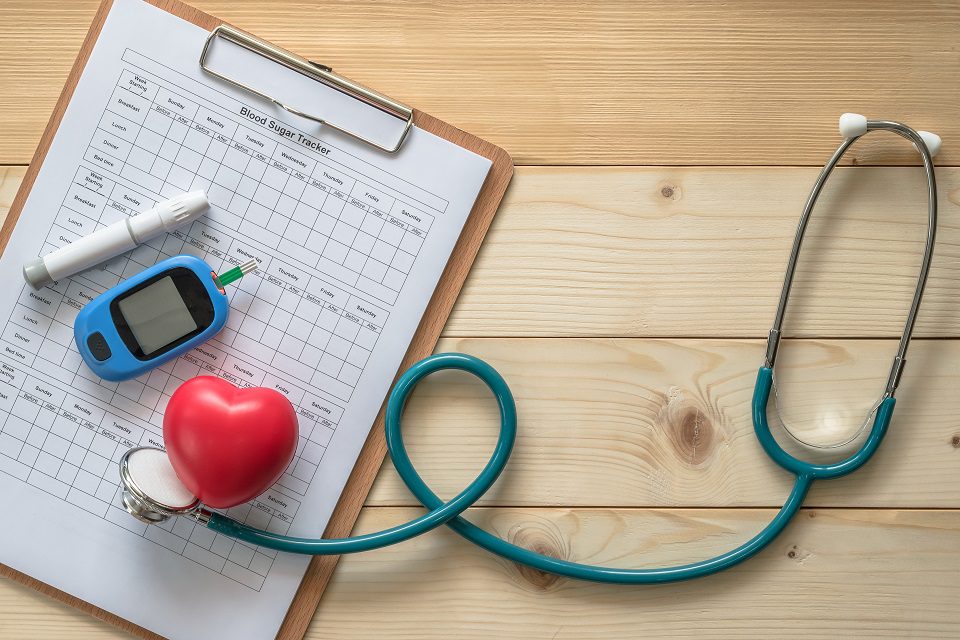The prevalence of diabetes hits record after record, with 34.2 million people of the U.S. population having diabetes. In fact, diabetes is actually the seventh leading cause of death in our country. With such statistics, there’s no wonder why most Americans are looking for surefire ways to reverse their health condition, and while many are looking to pop pills, we’re here to tell you that you can reverse the effects of diabetes completely naturally.
If you’re one of them, you know by now what diabetes does to your overall health. From kidney disease and skin conditions to nerve damage and even blindness, diabetes can mess up your entire body pretty easily if left untreated. Luckily, type 2 diabetes is preventable and reversible, too.
So, if you really want to take control of your life, read on.

What is diabetes exactly?
Most doctors would define diabetes as a chronic condition in which your body is unable to produce insulin or enough insulin. Insulin is basically a hormone released by your pancreas responsible for controlling the amount of glucose in your blood.
If you’re a healthy person, the insulin released by your pancreas helps with the storage of fats and sugar. However, if you have diabetes, this hormone doesn’t work as it should, resulting in high blood sugar levels and several diabetes symptoms.
Equally important is the fact that there are two different types of diabetes (type 1 and type 2). So, are you completely aware of the differences between the two?
Type 1 diabetes
Also known as insulin-dependent diabetes or juvenile diabetes, type 1 diabetes happens when your pancreas produces way too little insulin or no insulin at all. This occurs because the patient’s immune system destroys the insulin-producing cells by mistake.
So, when the insulin-producing cells are destroyed, the hormone called insulin is no longer released. Sadly for most type 1 diabetes patients, their health condition is rarely reversed. Still, it doesn’t mean that they can’t improve their numbers. Dietary changes could help them control blood sugar levels, so they don’t really have to depend entirely on insulin and meds.
Type 2 diabetes
Compared to type 1 diabetes, type 2 is actually the most common form of diabetes. Type 2 diabetes can happen to anyone, especially to those who have a not-so-healthy diet and lifestyle. This form of diabetes generally occurs when your body doesn’t respond well to insulin release, resulting in glucose build-up in your blood (high blood sugar).
Doctors say that type 2 diabetes usually happens due to several factors, including poor diet, physical inactivity, family history, exposure to toxins, weight gain, inflammation in the body, hormonal issues such as hyperthyroidism, and Cushing’s syndrome.
Luckily, you can easily reverse type 2 diabetes naturally.
1. Get rid of refined sugars
There’s a debate regarding whether sugar can cause diabetes or not (the opinions are mixed), but it’s definitely not a good (and healthy) idea to sip on soda and munch on candy bars all day. In fact, numerous studies have shown that added sugar consumption can increase the risk of developing type 2 diabetes.
Plus, you don’t really need a degree in nutrition to find out that most processed foods like donuts, pastries, white bread, and cakes contain tons of refined sugar and refined grains, all of which can easily harm our overall health; eating such foods increases your risk of obesity, therefore type 2 diabetes.
As stated by a study which was published in the Journal of Endocrinology, consuming way too much glucose-containing sugar could lead to increase levels of inflammatory messengers, known as cytokines. Since we’ve already highlighted that inflammation could be a type 2 diabetes factor, you should stay away from this type of food.

2. Minimize the amount of fat you eat
Well, not all types of fat are created equal; some sources (avocados, fatty fish, chia seeds, and nuts) are actually super healthy and type 2 diabetes patients should definitely include them in their diet, but, sadly, most of them tend to consume unhealthy types of fat.
Saturated fat, for example, is the type of fat type 2 diabetes patients should definitely avoid. It is mostly found in meats, dairy products, butter, palm oil, and other types of tropical oils. When ignoring type 2 diabetes diet guidelines, your insulin receptors will most likely be covered in fat, leading to high blood sugar because insulin is unable to enter your cells.
This process is called insulin resistance. So, keeping an eye on the type of fat you consume is crucial when you have type 2 diabetes.
3. Make sure you get the right nutrients
Trying to reverse your type 2 diabetes naturally shouldn’t be difficult at all, as some would think. If you’re eating real, and by real, we mean a variety of fruit and veggies, you should be fine. However, when you’re dealing with this condition, some nutrients are more important than others.
For instance, type 2 diabetes patients should aim to get more magnesium sources in their diets. So, foods like pumpkin seeds, swiss chard, hemp seeds, spinach, and almonds should definitely be part of your diet. Now you’re probably wondering why magnesium intake is important for your diabetes needs…
Well, studies suggest that getting the recommended amount of magnesium helps your body metabolize glucose properly.
Vitamin D3, chromium, and alpha-lipoic acid are also essential for diabetes patients. As a general rule, these nutrients and vitamins are naturally found in veggies, fruit, and fatty fish, so making sure that your diet is abundant in the healthiest foods on the planet is the smartest thing to do when you have diabetes.
4. Limit your gluten and dairy intake
If you’re a diabetes sufferer, gluten is not exactly your best friend. In general, gluten-containing grains such as wheat can easily lead to inflammation in the body, especially in the intestinal tract. To be more precise, when your gastrointestinal tract is inflamed, it causes leptin and cortisol imbalance, resulting in spikes in your blood sugar.
It would be great if you’d replace your pasta with quinoa or Shirataki noodles, for example. However, gluten is not your one and only enemy. Some dairy sources are your enemies, too. In fact, it’s not really about them, but about the protein found in them, called casein. This protein triggers inflammation, so that’s why you need to be careful with your dairy choices.
5. It’s time to exercise regularly
For obvious reasons, exercising regularly does wonders for your overall health, whether you have diabetes or not. But if you do have, getting enough regular exercise is essential. And we are not even talking about spending hours at the gym… Even 30 minutes a day of simple activities such as walking is more than enough for you.
Doing yoga is also a great way to move your body while managing your diabetes symptoms. If your doctor allows it, you can also do high-intensity interval training weekly. It will help you burn fat faster, so you’ll also control your blood sugar levels. So no matter what you want to do, just do it!
6. Catch your Zzzs
Sleep deprivation can harm your body in several ways. Plus, some doctors suggest that it could even lead to a pre-diabetic state. They also explain why. According to Mark Mahowald, MD, not getting enough sleep disrupts glucose metabolism, resulting in minimized insulin sensitivity, as well as glucose intolerance. In time, these two factors can lead to diabetes.
Make sure you get enough hours of sleep and if you have trouble sleeping, get professional help. However, before you do that, you can try to turn off all your electronics (smartphone included) and eat way before bedtime. Essential oils, warm baths, and herbal teas may also help.
7. Manage your stress factors
Stress can emerge from everything; family issues, work-related problems, financial loss, or losing a loved one… But the response we have towards stress is what really matters. Managing your stress factors should be a priority when you have diabetes because stress hormones boost the production of cytokines in your body, a major contributor to diabetes.
Plus, most people respond to stress with food, often leading to overeating. Obesity again is a contributing factor. Control your stress as best as you can and if yoga, meditation, listening to music, spending time in nature, or exploring your hobbies don’t work, seek professional help.

8. Lower chemical exposure
Another major contributor to diabetes is chemical exposure. And if you think that you are not exposed to chemicals because you don’t work in a factory, let’s say, think again. Even some products we use daily can increase the risk of developing type 2 diabetes.
Numerous studies have found various connections between chemicals like dioxins, phthalates, PCBs, BPA, and type 2 diabetes. In fact, a recent study suggests that women who have high levels of phthalates in their urine have a 70 percent greater risk of developing type 2 diabetes than those with low levels. Try to eliminate products that contain these chemicals.
Curious to know more about diabetes? Here’s what you need to read: 10 Early Warning Signs of Type 2 Diabetes That Are Often Overlooked













